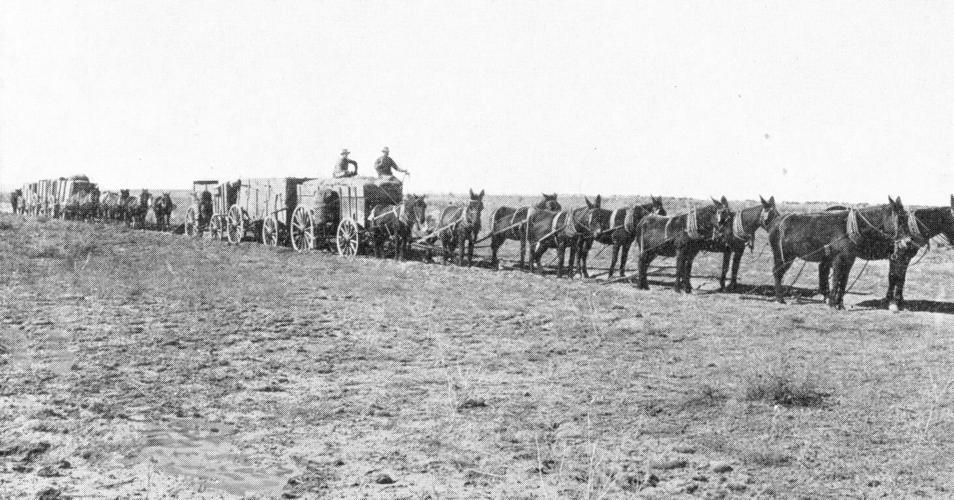Located 60 miles southeast of Kingman in Mohave County, the remote McCracken Mine was discovered in 1874 by Jackson McCrackin and “Chloride Jack” Owen, for whom the Owen Mining District was named.
The rich silver lode comprised a 9,000 foot ledge in some cases carrying 18 inches thick horn silver (chlorargyrite), a silver ore exposed to the environment taking on the dull luster of a cow horn.
Col. David Buel purchased the McCracken Mine for $240,000 six months after its discovery. Early assays reported as high as $2,700 silver per ton. The “i” in McCrackin was substituted with an “e,” thus the spelling of the McCracken Mine.
Established in 1877, the town of Signal, or Signal City, as well as the adjacent New Virginia Camp serviced the McCracken Mine, a consolidation of the Senator and Alta claims, which by 1878 employed 27 men and another 14 at the mill.
Located 9 miles from the mine, Signal was positioned along the bank of the Big Sandy River for the purpose of water access to sustain milling operations.
The town included hotels, 13 saloons, three large restaurants, five general stores and a brewery. It employed 700 men at the height of operation.
Assay rooms, machine shops, offices and warehouses were used by the machinists, masons, carpenters and laborers at both the mine and mills. A stone building at the summit of 3,524-foot McCracken Peak served as a boarding house for miners.
The first shipment of $18,000 in bullion followed another of $83,000 averaging 0.935 fineness.
A silver mill at Greenwood, 12 miles northeast from the mine, evolved from a dry to a wet crusher and produced up to 30 tons daily valued at $1,300 of silver bullion. Reduction of freighting costs necessitated its replacement by the McCracken 20-stamp mill and Signal 10-stamp mill near the Big Sandy River. Amalgamation was used in the recovery of silver.
Signal received supplies from San Francisco by train to Yuma, then by barge up the river to Aubrey Landing, at the junction of the Bill Williams and Colorado rivers, where wagons were employed to haul the remaining 35 miles upgrade to Signal. Ore shipments subsequently retraced this route.
Rising production costs, destruction of the Signal Mill by fire, coupled with declining market silver prices caused the mine to close in the 1880s.
Between 1875 and 1906, the McCracken Mine produced more than $800,000 of silver, most from a tunnel entrance known as the “Palace Chamber” on the southeastern end of McCracken Peak. The ore ranged from 15 to 300 ounces of silver per ton.
The mine includes 9,000 feet of tunnels and drifts, and a 600-foot deep shaft.
Worked by multiple owners and leases over the years, a gravity-flotation mill at Signal recovered silver and lead from the McCracken Mine during the 1920s.
In 1958, the property was leased by Ben F. Griffith, a former Los Angeles attorney, to the Ari-Vada Development Co., based in California. The property consisted of four patented and 18 unpatented claims. A 150-ton flotation mill was erected on-site. However, operations ceased two years later.
During its brief revival, the town of Signal saw a resurgence in activity with more than 15 employed miners’ families at the site living among the old buildings.
Other than the foundations of the Signal and New Virginia mills and a nearby cemetery consisting of about 60 graves, little remained of the town of Signal by 1974.
The mine was reopened in 1983 by the Arizona Silver Continental Corp., based in Vancouver, British Columbia. Having redesigned the shafts and tunnels, an average of 500 tons of ore was hauled daily to the Mindy Mill in Yucca for processing.
Inactive since 1985, the mine has been remediated by Teck Resources Ltd. It sealed 47 mine openings with backfill, polyurethane foam and gate closures, and provided nine bat-compatible gates for the purpose of bat habitat preservation.





